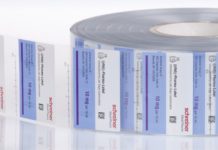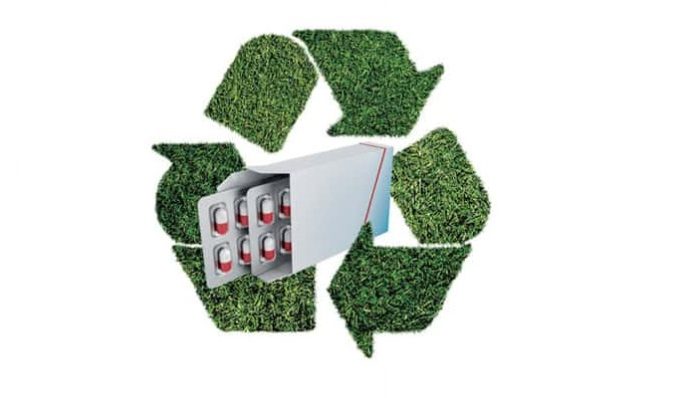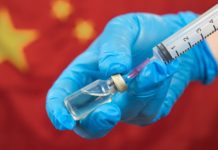The majority of consumers base their first impression of a business and its sustainability credentials on the product packaging.
With a third of UK consumers prepared to pay more for sustainable goods and services, the distinction between single-use, non-recyclable, and wasteful packaging and their eco-friendly equivalents might affect a product’s success.
However, the task is not as straightforward for the pharmaceutical sector as just replacing materials. An industry that contributes significantly to global pollution must strike a balance between addressing the expectations of contemporary eco-aware consumers and the health and safety requirements of industry authorities.
Market leaders are racing to adopt sustainable methods and rethink materials in order to reap the benefits of doing so, as this wire walk has evolved into a race. But what are the most significant changes they may anticipate seeing in the pharmaceutical packaging business as a result of this push?
Recognising The Obstacles And Getting Beyond Them
While companies all across the world continue to prioritise sustainability in their initiatives, the pharmaceutical business faces more difficulties than most.
When it comes to packaging design, many people place the highest value on aesthetics and user experience. But when it comes to pharmaceutical items, health and safety continue to be the most important factors.
To maintain product integrity and performance, it is essential that the products themselves be safeguarded against environmental elements including moisture, temperatures, light, oxygen, and other pollutants. However, the packaging must also play a part in safeguarding the patient.
This covers a variety of health and safety requirements, the most obvious of which are child resistance and preventing people other than the patient from accessing potentially hazardous or harmful chemicals. Health regulations regarding component profiles and the safe administration of medications, including dosages and product accessibility, are in addition to the risk of accidental consumption.
The counterfeit medication business, which is one of the world’s fastest-growing industries and is currently worth over $200 billion while expanding by 20% annually, only serves to complicate matters further.2
Pharmaceutical packaging manufacturers have a duty to include anti-counterfeit tech in their products if they want to contribute to improving consumer safety and controlling the fake pharmaceutical industry.
The problem, however, is that many of the materials essential to ensuring these health and safety functions — such as those that prevent contamination and administer medications through sprays, injectables, and blister packs—also pose issues with sustainability.
To produce appropriate pharmaceutical containers, a variety of materials, including numerous plastic polymers, glass, paper, cardboard, and metals, are frequently mixed. However, these mixtures cannot be broken apart for recycling. Similar to this, the production of such complex equipment requires an excess of resources and energy, with the pharmaceutical industry being accountable for 300 million tonnes of plastic trash annually, of which 50% is single-use.
A recent study identified inadequate stakeholder communication and restrictive processes as the main obstacles to more circular package design, in addition to the physical constraints that change-makers in the sector must overcome. 4
What are the top goals for people driving sustainable change in the sector, given the variety of obstacles they must overcome?
Proactive In Preventing
It’s time to start again when contemplating packaging design. Sustainability must be incorporated into primary and secondary packaging from the outset rather than being forced into the existing package design as an afterthought.
Based on the waste hierarchy, prioritising prevention is the best course of action. Industry leaders are urged to take waste prevention into consideration as early as possible by employing reuse and recycling programmes.
This needs testing environmentally friendly materials within the industry’s governing and restricting health and safety frameworks for pharma packaging producers. What will happen, though? Instead of sending products straight into the traditional testing stage, in its pricey and wasteful form, three-dimensional (3D) visualisation and printing technology are playing a greater role in the packaging design stage, testing innovative size and shape, and functionalities within a controlled setting.
Products can be printed after the visualisation phase for testing and inspection. Compared to traditional testing, this delivers an accurate evaluation of model performance while reducing production waste and carbon footprints.
Another trend in eco-packaging is to incorporate important product features into the primary and secondary packaging at the outset rather than merging them later in the supply chain.
For instance, writing patient and product information directly on secondary packaging eliminates the need for further separate labels and warning leaflets that are affixed to or placed within final package items.
Similar to this, adding quick response (QR) codes to bottles, containers, blister packing, and other items enables patients to obtain digital versions of product dose and dispensing information to reduce waste while maintaining essential patient safety standards.
Using A Renewable Energy Source
Testing and evaluating sustainable and reusable options is necessary to lessen the industry’s reliance on single-use products that eventually end up in landfills.
Companies that manufacture pharmaceutical packaging are currently looking towards bio-based and renewable materials. Utilizing sugarcane-derived ethylene, a carbon-negative method that utilises carbon dioxide (CO2) and produces oxygen when grown, is one new innovation. In comparison to conventional methods for obtaining ethylene, Braskem, one of the industry’s top makers of so-called Green PE, currently produces 440 million pounds of the eco-friendly plastic annually, which is thought to result in a two billion-pound CO25 decrease.
And Big Pharma is utilising the renewable resource by testing Green PE in blister packaging. Due to the material’s tendency to biodegrade after 10 years, this is a major development.
Finding materials that can satisfy environmental requirements without sacrificing integrity or performance is crucial for pharma packaging producers since the risks of not meeting safety regulations are higher than in nearly any other sector.
One such substance is aluminium, which serves as an efficient barrier between the medication and the patient while also being one of the most eco-friendly metals because it can be recycled, saving 95% of the energy required for its production.6
References:
- Third of consumers willing to pay more for sustainable products [Internet]. Consultancy.uk. Consultancy.uk; 2021 [cited 2022Sep]. Available from: https://www.consultancy.uk/news/29424/third-of-consumers-willing-to-pay-more-for-sustainable-products
- Overstreet K. $200 billion pharma counterfeit drug market growing by 20% per year [Internet]. Healthcare Packaging. 2019 [cited 2022Sep]. Available from: https://www.healthcarepackaging.com/news/traceability-serialization/article/21102806/200-billion-pharma-counterfeit-drug-market-growing-by-20-per-year
- Sustainable, biodegradable and eco-friendly packaging providers market by eco friendly packaging attributes, type of packaging, type of packaging container, end-user and Key Geographies : Industry trends and global forecasts, 2021-2035 [Internet]. Yahoo! Finance. Yahoo!; 2022 [cited 2022Sep]. Available from: https://finance.yahoo.com/news/sustainable-biodegradable-eco-friendly-packaging-084600578.html
- Salmenperä H, Kauppi S, Dahlbo H, Fjäder P. Increasing the circularity of packaging along Pharmaceuticals Value Chain. Sustainability. 2022Apr14;14(8):4715.
- Rijk M. A closer look at bio-based raw materials [Internet]. CurTec. [cited 2022Sep]. Available from: https://www.curtec.com/en/news/sustainability/a-closer-look-at-biobased-plastics
- Why is aluminium environmentally friendly? [Internet]. ASM Metal Recycling. 2021 [cited 2022Sep]. Available from: https://www.asm-recycling.co.uk/blog/why-is-aluminium-environmentally-friendly/





















